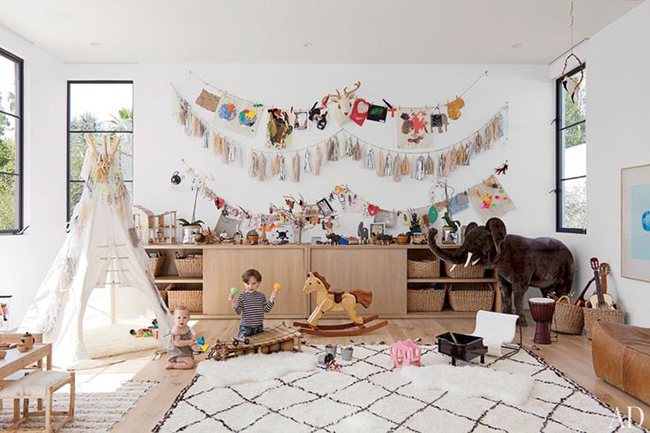
When I was young, we played inside a cardboard box. To be fair, it was a very large box—a playhouse, in fact, brightly decorated with the cast of Looney Tunes. We kept it in the basement, along with our play kitchen and other toys, and spent many days enjoying a space that was just for us kids. Times have changed. Cardboard has given way to elaborate outdoor forts and treehouses, as well as a current trend, the stylish children’s tipi. Indoors or out, a tipi is now the hottest place for playdates, story time, and just having fun.
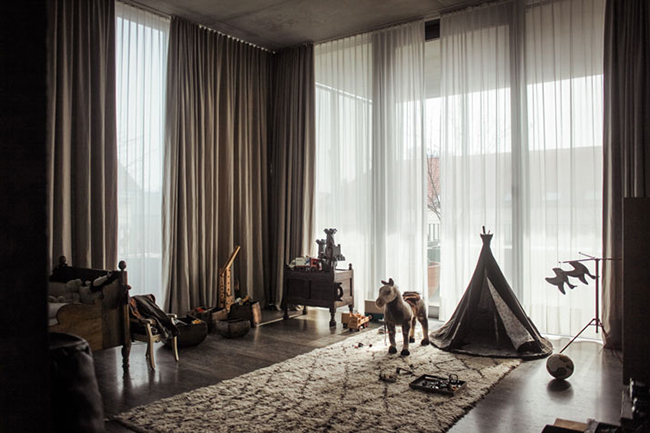
A History
The tipi (also spelled “teepee” and “tepee”) may be one of the most recognizable elements of Native American culture. The structure dates back centuries and is most commonly linked to the tribes of the Great Plains. But the tipi is more than just a symbol, it’s the perfect marriage of form and function—perhaps the earliest display of American ingenuity. Traditionally made of animal skins, the tipi was designed to be portable, impervious to weather, and accommodating of an indoor fire. This small space had all the amenities for life on the go.

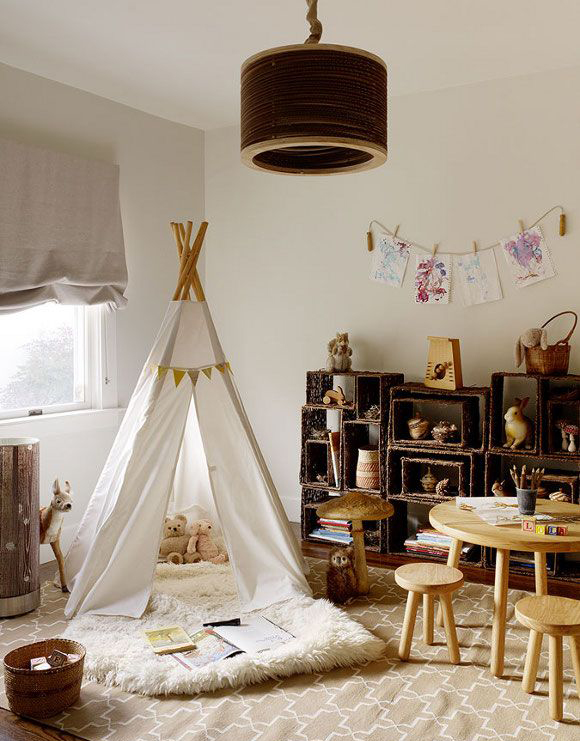
From the Great Plains to the Playroom
The simplicity and shape of the tipi naturally lend themselves to creating a fun space for kids. With so many child-friendly options available, parents are turning to tipis for a decorative and historical alternative to the common playhouse.
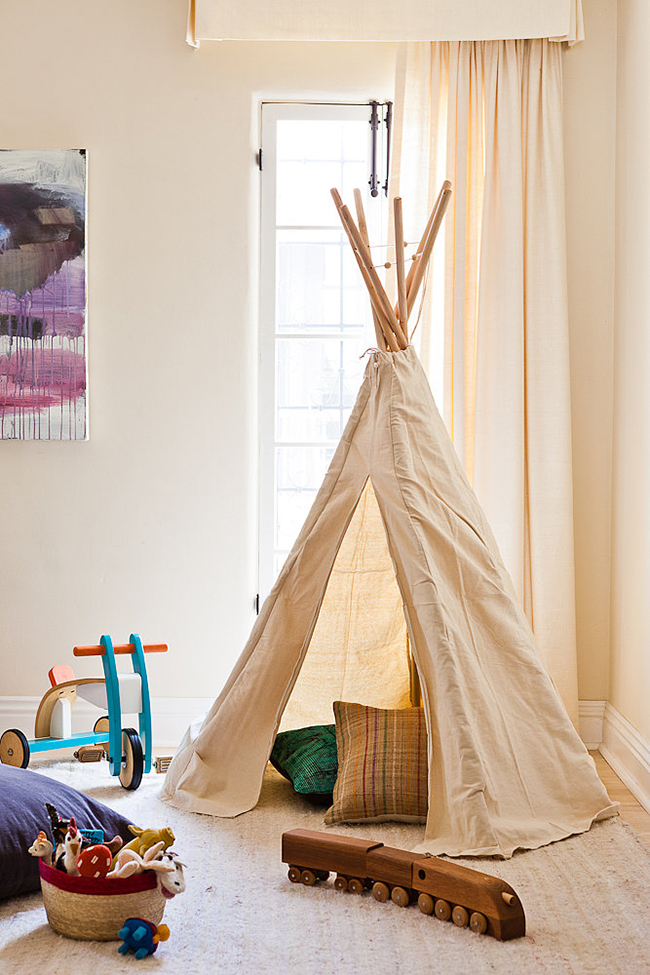
Works Outdoors Too
Tipis also work well in outdoor spaces. Here, designer Claire Stansfield set up a tipi on the lawn of her Hollywood Hills home. It’s perfect for both playtime and lying about.
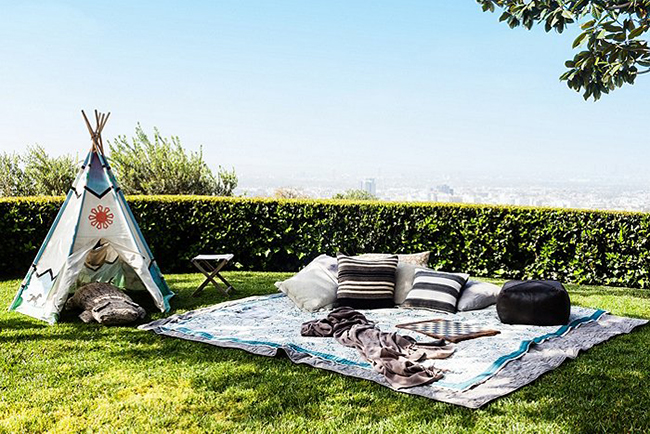
A Great Learning Opportunity
The tipi not only makes for a great play space, but it also provides an opportunity to teach kids about Native American culture! With the addition of a new tipi, be sure to share the history, significance, and function of this amazing innovation. A quick Internet search will yield countless resources and help make your child’s play space all the more special.
Featured Image: Architectural Digest


